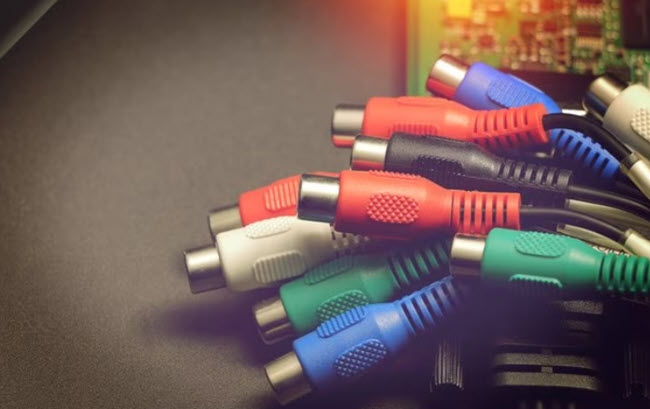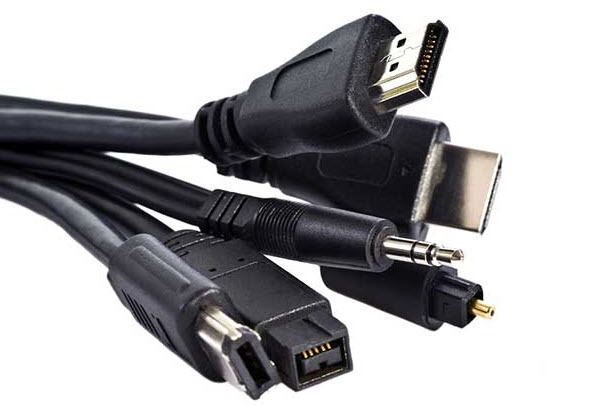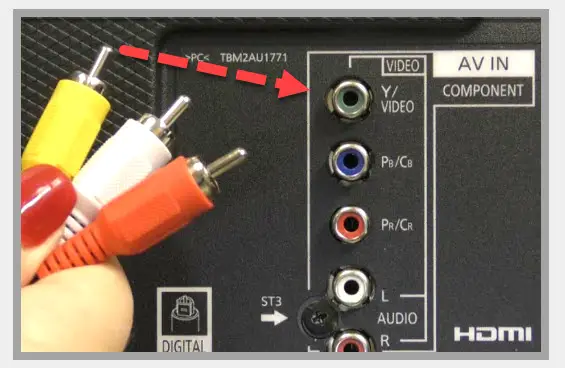An audio visual cable, also known as an AV cable, is an essential element of modern home entertainment systems. Without them, televisions and speakers would not come alive for family and friends’ entertainment.
These AV cables link audio and video devices for various uses, from gaming and entertainment systems to professional settings. Knowing what these cables are and how to use them correctly will make connecting your audio equipment simpler and less of an effort.
What is an AV Cable?
An AV cable is a type of wire that transmits video and audio signals between devices. Many people are familiar with AV cables, which are commonly used to connect devices like DVD players and consoles to televisions.

AV cables come in wide varieties, and understanding which type to use for optimal performance from your equipment is essential. This is because the type of input your device has and whether you require high-definition video can affect which cable type to purchase.
For instance, if you are watching a movie and want to hear the dialogue clearly, an AV cable with a braid shield will help prevent electromagnetic interference (EMI) from disrupting your signals. EMI is an invisible type of noise that can be generated from various sources.
When selecting audio visual cables, the length should be considered, as long runs may cause issues for some equipment. You can purchase extension cords, spikes, or fiber optic extension cables that allow you to run longer cables without sacrificing quality; these will guarantee optimal performance from all of your AV gear regardless of where it’s situated.
Definition
An audio-visual cable (AV cable) is a device that transmits video and audio signals between sources. They’re commonly used to connect gaming consoles, DVD players, and other devices requiring audio output.
Audio visual cables can be divided into five main categories:
- Composite AV Cable
- S-Video AV Cable
- Coaxial AV Cable
- VGA/DVI AV Cable
- HDMI AV Cable
Each type carries distinct signals.

When using audio visual cables, shielding from interference from other signals is paramount. Power cords, wireless networks, and cell phones all can interfere with AV signals in ways that degrade their quality.
Video signal transmission requires high-quality materials and advanced technologies to guarantee crystal-clear data transmission. Thus, the best AV cables utilize only top-grade materials and cutting-edge technologies to guarantee this outcome.
To maximize the benefit of a high-quality AV cable, it’s best to consult an expert. They can guide you through all of the available options and suggest a solution tailored to your requirements. They may even suggest how best to utilize existing cables while suggesting which ones should be avoided.
Basic Structure
AV cables are essential for home theater setups that transmit audio and video signals. Since there are various types of cables, each carrying its own signals, it’s essential to determine which type is suitable before buying anything.
An audiovisual cable consists of several fundamental elements. These include the center conductor, dielectric, shield, and jacket.
The center conductor carries the signal and is shielded by a dielectric material (insulation) from electrical interference. This shield acts as an outer layer that shields the center conductor and serves as a return path for current back to the ground.
The dielectric has many properties, but its characteristic impedance is one of the most significant. This property determines the electrical characteristics of a cable and must be at least 75 ohms to match both the input and output impedances of your video equipment.
Different Types of AV Cables
AV cables are essential to making your television, speakers, and other audiovisual equipment function. VCRs, DVD players, and set-top boxes would not be functional without them.
Thankfully, you can choose from several types of audio/video cables. These include coaxial, composite, S-video and HDMI.
Coaxial Cables – Coaxial cables are the most common audio and video cable used to transmit audio and video signals from display sources to televisions. Usually equipped with two jacks on either end for left and right channel sound, coaxial cables conveniently transport content.
Component Cables – Commonly used for analog video, component cables have RCA plugs at each end and are usually color coded for easy installation.
S-Video Cables – Commonly used for analog video, these cables transmit only a single signal in the form of color and brightness information. This makes them suitable for older televisions that may not have HDMI to enhance picture quality.
High-quality audiovisual cables use oxygen-free copper conductors to transmit signals accurately with minimal interference. They’re shielded to shield away electrical cords and electromagnetic fields for added protection, often featuring braided or foil shielding and a center conductor made of silver-coated copper. A good cable length should also be considered; aim for at least six feet.
Components
An audiovisual cable consists of several elements. These include conductors, connectors, and shielding. Each element serves a distinct purpose and works together to create the optimal connection between your devices.
Conductors are essential in transmitting signals between cable ends. Not only that, but their superior metal construction makes it easier for signals to travel through the cable with more weight on board.
Component video is an analog signal that divides the signal into three separate cables. Each cable transmits a different aspect of the picture.
For example, the green cable (also called Y) transmits brightness information about a signal, while blue and red cables (Pb and Pr, respectively) carry color data.
The RCA connector is one of the most common connection types on consumer audio/visual equipment. It has a jack for audio and another for video output, with color-coded wires to help you connect them correctly.
Uses
Audio visual (AV) cables bring your TV and speakers to life with sound and video. They’re used in gaming systems, entertainment systems, as well as various businesses.
Selecting the correct AV cable is paramount for a great experience and can save you a lot of hassle in the future. Knowing different types of AV cables will enable you to narrow down your choices and find one that works best for your needs.

A superior audio visual cable should be constructed with premium metals, conductors, and shielding for smooth transmission of signals free from interruption. A higher-quality cable offers this assurance.
Another advantage of higher-grade AV cables is their resistance to interference from things like wireless networks, power cords, and cell phones. Interference can erode the signal’s integrity and result in a loss of picture and sound clarity.
In addition to avoiding these problems, a high-quality AV cable can reduce the likelihood of “digital cliffing,” an issue with analog signals that causes content loss due to distortion during transmission. If streaming lots of high-definition video and audio, make sure your HDMI cable supports these media types and is HDCP-certified.
Choosing the Right AV Cable
When selecting AV cables, you must ensure the right one meets your requirements. Whether installing a brand-new home theater system or just upgrading an existing setup, proper cable selection is key for providing the optimal experience.
AV cables come in an array of types, and it can be overwhelming to choose the right one for you. Before deciding, it’s essential to understand what each type does and how it functions before determining which one meets your needs.
When selecting an audio visual cable, the key factors to consider are its conductors, shielding, and maximum distance limits. All of these can have a significant effect on the quality of your signal transmission.
Shielding is a material used to shield audiovisual signals from external influences like wireless networks and power cords that could degrade them and interference from nearby AV components. Shielding also serves to shield these signals from degradation caused by other electronic components in close proximity.
Finally, an ideal AV cable should be capable of transmitting HD content over a reasonable distance. Ideally, an HD cable can transmit up to 100 feet without losing image quality; longer runs, however, will need high-grade cable certified for the job.






